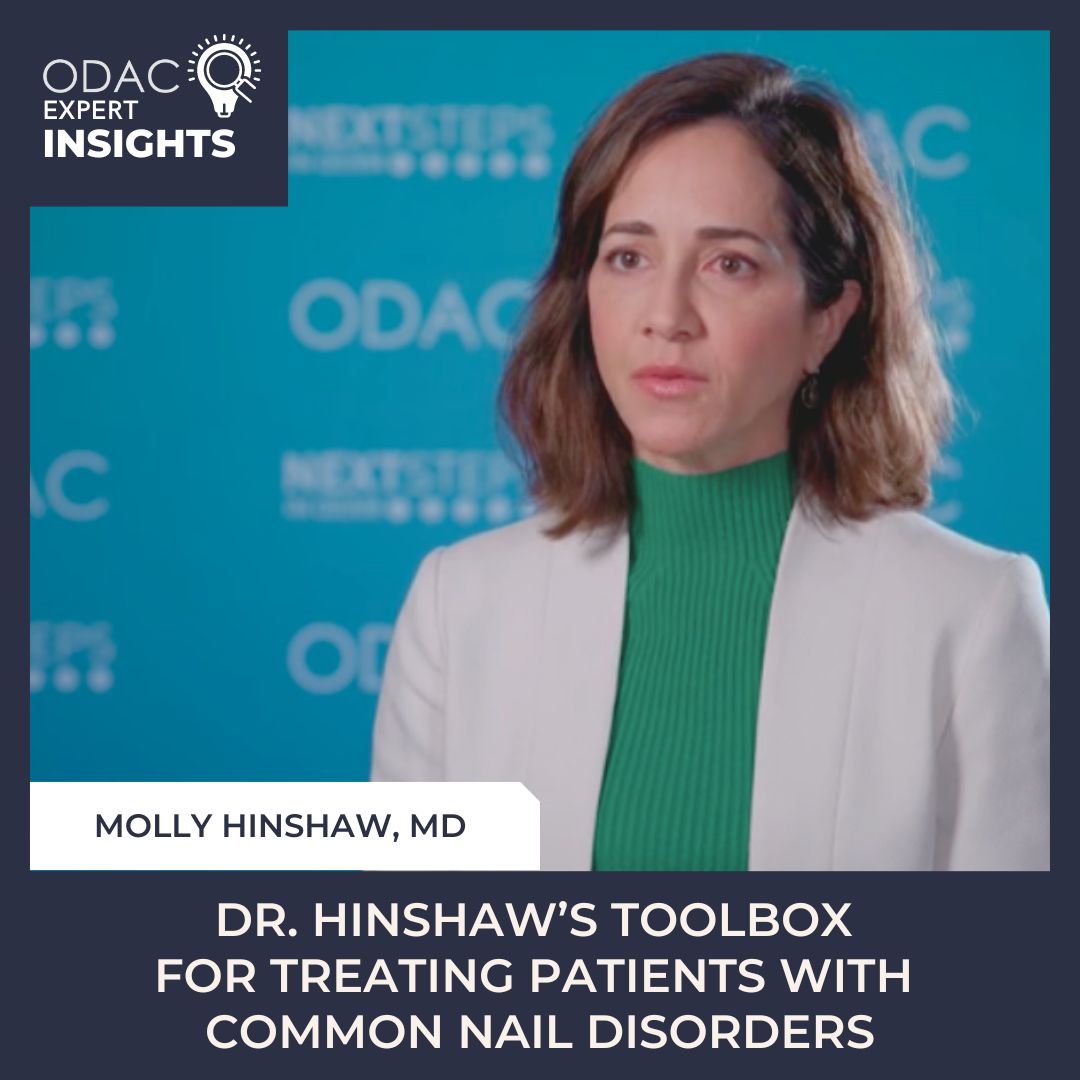Nail disorders can be very troubling for patients. From onycholysis to paronychia to ingrown nails, dermatology clinicians can see a variety of common nail disorders in their patients. So what are some tried and true ways to treat nail disorders? Next Steps in Derm, in partnership with ODAC Dermatology, Aesthetic & Surgical Conference, interviewed Dr. Molly Hinshaw, professor of dermatology, section chief of dermatopathology and director of the nail clinic at the University of Wisconsin School of Medicine and Public Health. Watch as Dr. Hinshaw shares why it’s important to determine if onycholysis is primary or secondary. Learn which paronychia patients may benefit from weekly fluconazole. Plus hear what’s in Dr. Hinshaw’s toolbox for treating ingrown nails.
Further Reading
If you want to read more about nail disorders, check out the following articles published in the Journal of Drugs in Dermatology:
ABSTRACT
Good adherence to treatment is necessary for the successful treatment of onychomycosis and requires that an appropriate amount of medication be prescribed. Most prescriptions for efinaconazole 10% solution, a topical azole antifungal, are for 4 mL per month but there are no data on patient factors or disease characteristics that impact how much medication is needed. Data from two phase 3 studies of efinaconazole 10% solution for the treatment of toenail onychomycosis were pooled and analyzed to determine monthly medication usage based on the number of affected toenails, percent involvement of the target toenail, body mass index (BMI), and sex. Participants with two or more affected nails required, on average, >4 mL of efinaconazole per month, with increasing amounts needed based on the number of nails with onychomycosis (mean: 4.39 mL for 2 nails; 6.36 mL for 6 nails). In contrast, usage was not greatly impacted by target toenail involvement, BMI, or sex. Together, these data indicate that the number of affected nails should be the major consideration when determining the monthly efinaconazole quantity to prescribe.
ABSTRACT
Recently, treatment outcomes in patients with toenail onychomycosis have improved considerably due to more effective oral antifungal medications such as terbinafine and itraconazole. These medications can either be used continuously for several weeks at a lower dose or intermittently (pulsed) at a higher dose. Previous literature comparing pulse and continuous therapy has generated mixed results.
Our study aims to compare the efficacy, in terms of clinical cure rate, of continuous vs pulse dose terbinafine regimens for toenail onychomycosis. Sixty patients with onychomycosis of Fitzpatrick skin types IV to VI, between 15 and 65 years of age, were divided into a continuous treatment group receiving 250 mg terbinafine once daily for 12 weeks and a pulse treatment group receiving 250 mg twice daily terbinafine for 1 week repeated every 4 weeks for 12 weeks. Each patient was followed up at weeks 4, 8, and 12.
Efficacy of the continuous treatment group was significantly greater at 76.67% compared with 26.67% in the pulse treatment group. Thus, we conclude that the clinical cure rate of a continuous dose regimen of terbinafine is a superior treatment option for toenail onychomycosis. However, we also suggest further studies including combinations of multiple agents and hybrid regimen models for the optimal onychomycosis treatment.
Did you enjoy this video interview? Find more here.

